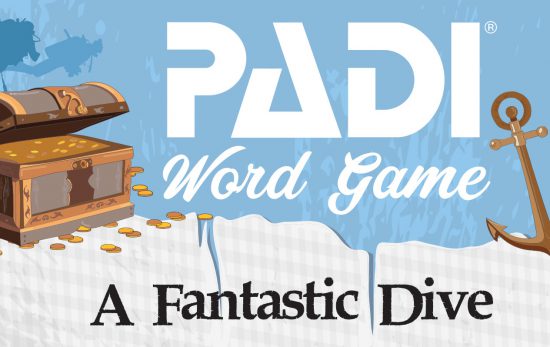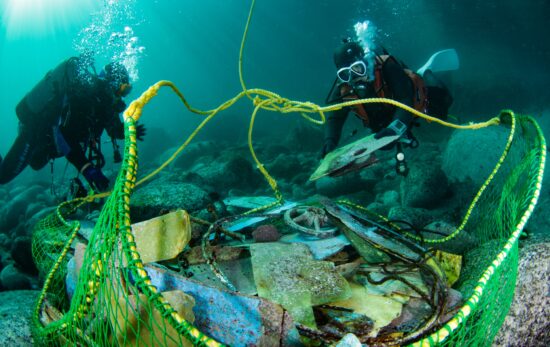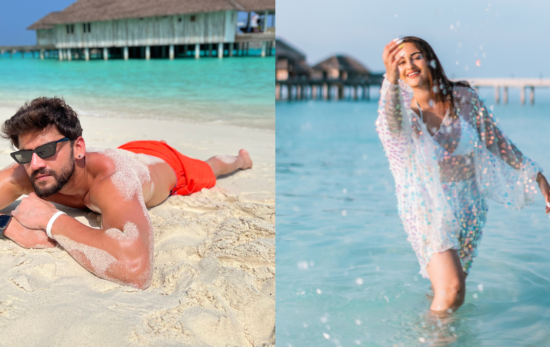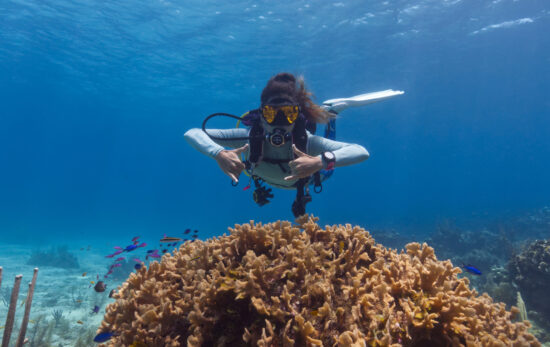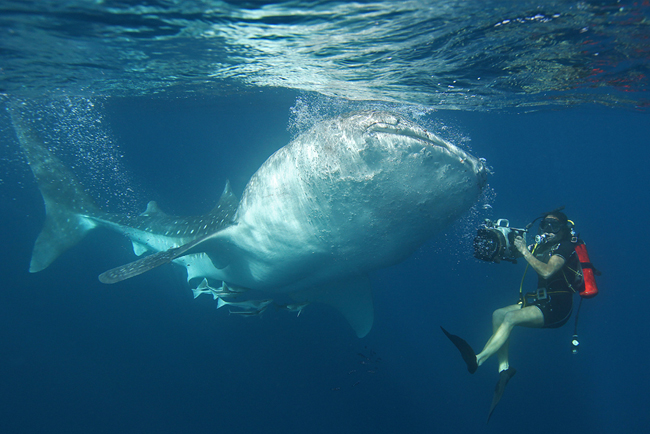
Photo Boris Unger
We caught up with PADI AmbassaDiver, Birgitta Mueck, to talk about her passion for wildlife conservation and her work with Crystal Water Film Production…
What inspired you to take up underwater photography & videography?
It all started with my early passion for the ocean and its many charming inhabitants. As a small kid I wanted to spend as much time as possible close to, and in, the water. When my father (who is the founder of Crystal Water Film Production) went out on his diving and filming adventures, I was the little girl in the boat looking overboard watching his bubbles move around, imagining what it was like under the surface. This made me both curious and inspired, and I knew then that I would find myself making those bubbles one day.
As I always loved the feeling of freedom snorkeling gives me, for a long time I was happy just discovering underwater life with only a mask, snorkel, and fins. In 2004, I started to bring a camera underwater while snorkeling. It was at this time, when a group of socializing sperm whales in the blue, pelagic waters of the Azores became my first underwater models! From that very first moment immortalizing my amazing encounter, and the feelings I got to experience with these friendly giants, I knew I was totally hooked! Thanks to the camera, I felt that I could share both my experiences and the interest and awareness I so strongly felt for the ocean, more easily. A good year later, I received my first PADI certification, which opened the door to discovering and documenting the amazing life hidden in deeper waters.
Through your work with Crystal Water Film Production, do you feel that you’ve impacted how others view aquatic environment and conservation?
Yes, we receive many e-mails from people who express their great appreciation for the work we do, emphasizing how our films and documentations have an eye-opening effect on them. I feel that our work does impact others’ views on aquatic environment and conservation.
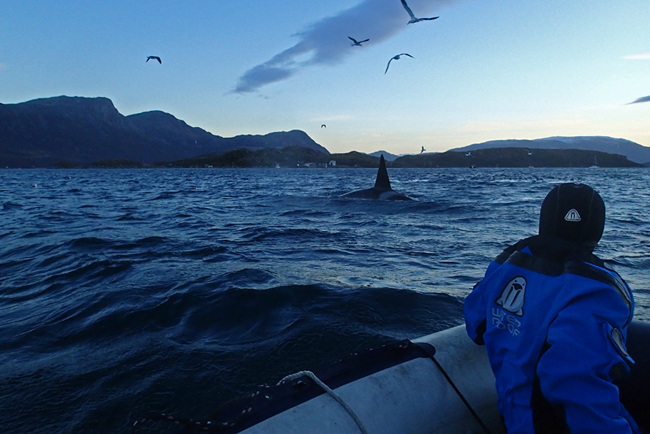
Photo Christian Tousignant
Are there any environment and wildlife conservation issues that you feel are particularly important at the moment?
I would like to highlight Marine Protected Areas and the importance of developing more, and bigger, ‘no take’ zones. A ‘no take’ zone is a protected marine area where all fishing pressure is removed completely, providing areas where fish are able to reproduce, spawn and grow to their adult size. Only a small fraction of the world’s oceans are protected today, and the vast majority of existing marine reserves need much better management to control the illegal fishing happening in them. During our recent film expedition, when recording ‘Life Against All Odds’, we were sailing and diving in the Mediterranean, Atlantic and in Scandinavian waters to document the difference between protected and non-protected marine areas. The difference we experienced truly was impressive, especially in the well managed ‘no-take’ zones.
What has been your most memorable diving experience?
That is a very difficult one as there are so many amazing diving experiences of various kinds! One of them was when we were searching for sharks in Nordic waters. We dedicated two years to the expedition, sailing and diving; trying to find, and film, cold water sharks in the waters of Scandinavia, Scotland and Ireland. We saw various species, from the smallest velvet belly sharks to huge basking sharks. During the entire two years, we searched for the spiny dogfish, a shark normally found in Scandinavian waters. The spiny dogfish was once one of the most abundant sharks, but, due to overfishing, its populations have decreased by at least 95% in European waters during the last two decades. Since this shark species is a late maturing fish, where the females mature at an age of 18–21 years, giving birth to only a small number of living offspring (2-11) after a two-year gestation period, it’s been very hard for the population to recover. After two years of searching, when our deadline for the film was almost upon us, we made one final dive on a 300 meter deep drop off in Norway. This was when we finally met the spiny dogfish! Not content with that, however, the sharks were attracted to our film lamps and suddenly there were hundreds of spiny dog fish surrounding us – both underneath and above us, they were everywhere! Imagine the sight of hundreds of hammerheads but with spiny dogfish! After so much time and effort searching for this shark species, it was a truly unbelievable experience.
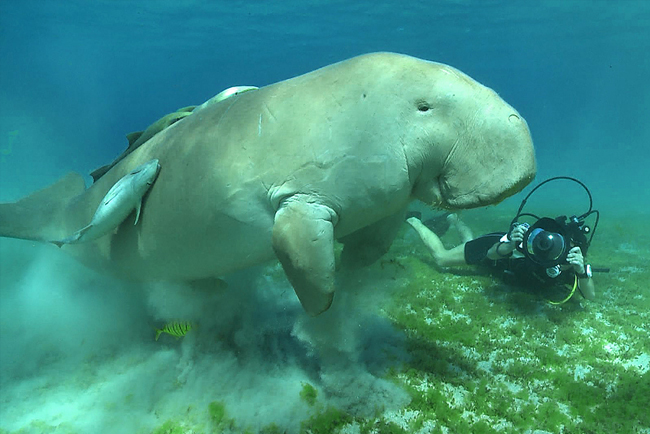
Photo Armin Mueck
Do you think it’s a diver’s responsibility to encourage the wildlife conservation of our oceans?
Yes, as divers we are lucky enough to experience the joy and beauty of the underwater world. With this knowledge, and pleasure we get from the ocean, also comes a responsibility to protect and encourage conservation. The great experiences we get while diving, and our strong passion for marine places and wildlife, make divers an inspiring and informed source of information. To actively share our knowledge and passion with others is a good start to encourage and spread the word about the importance of ocean conservation.
Do you have any tips for aspiring divers / underwater photographers?
The first thing, before even bringing the camera underwater, is to be comfortable underwater and with your dive skills, especially buoyancy. It helps a lot to spend time familiarizing yourself with your camera equipment in a controlled setting above water so that you don´t end up struggling to find the settings underwater, missing out on good shooting opportunities. Try to gain knowledge about what you are photographing and to study the animal´s behaviours. Always remember that the welfare of the marine life comes first. No picture is worth taking if it has a negative impact on the wildlife.
What does MyPADI mean to you?
For me MyPADI means to inspire others, raise awareness and share my passion for the ocean.
To learn more about how you can help the environment whilst diving, read our article The Power of Scuba Divers to Heal the Planet.
If you’re keen to learn more about underwater videography, try checking out our Underwater Videographer specialty course.
